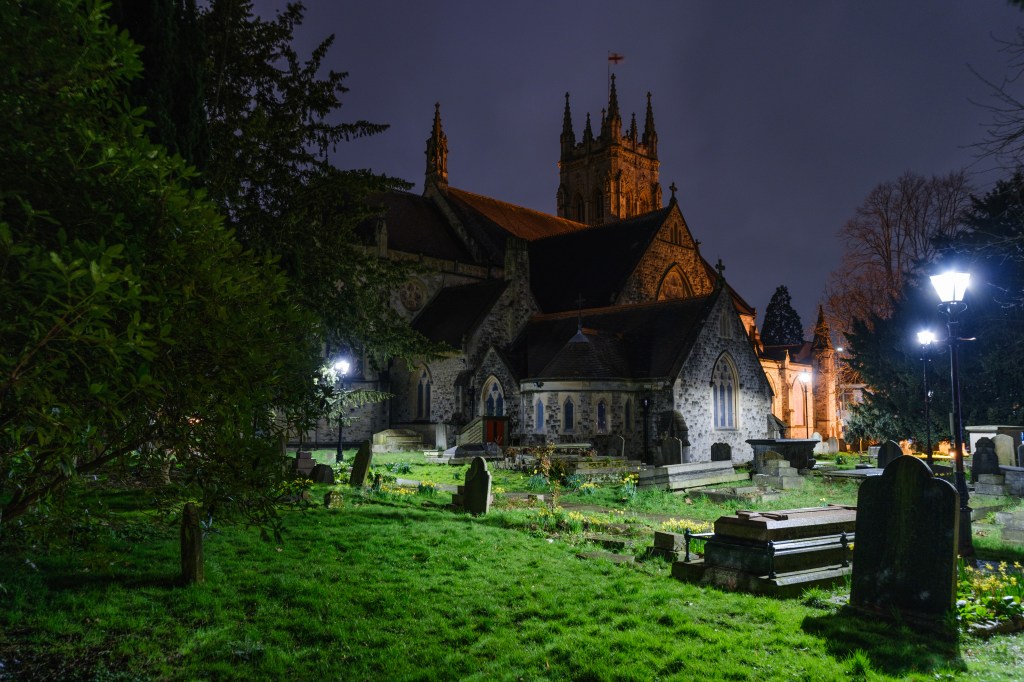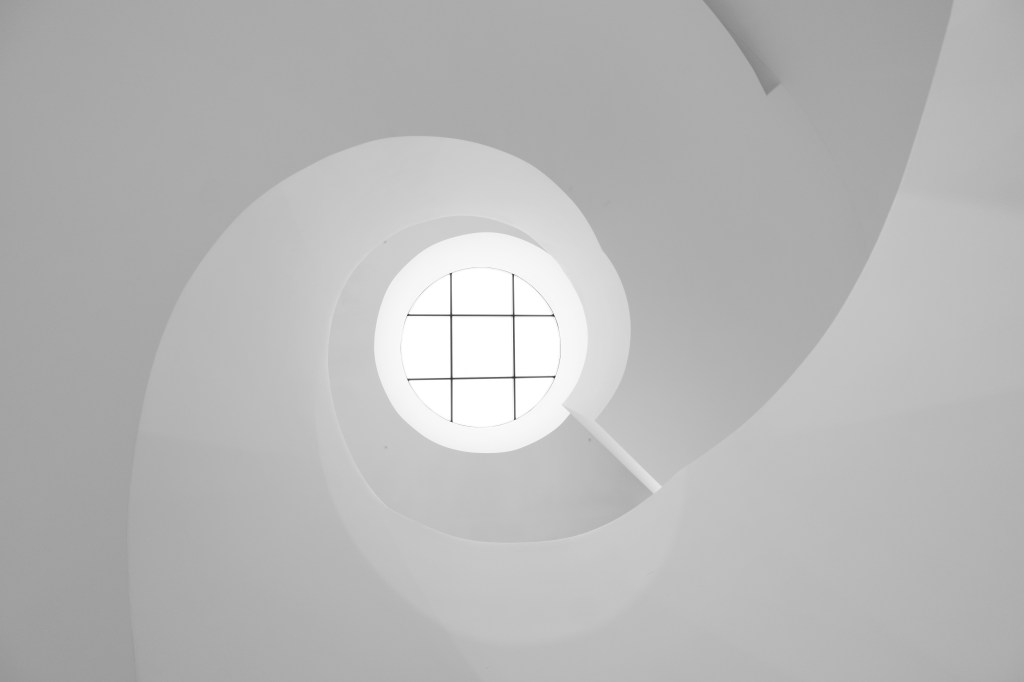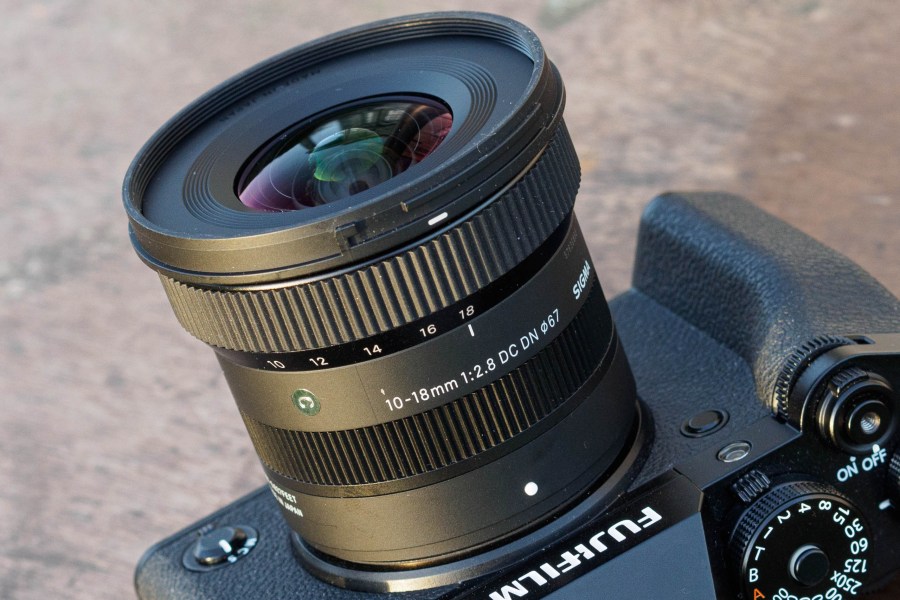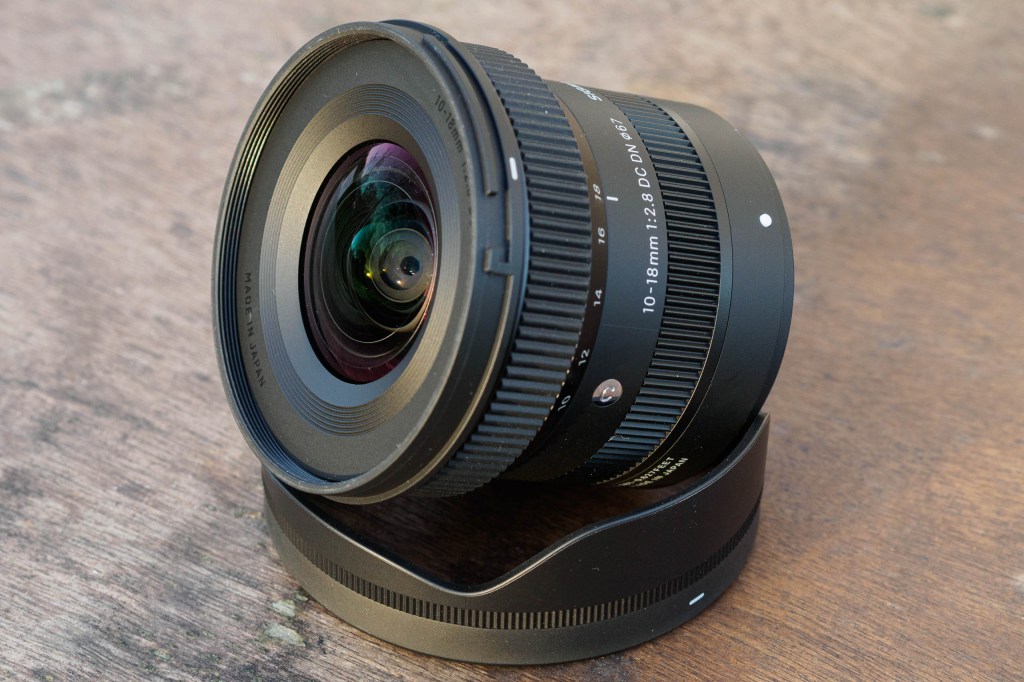Amateur Photographer verdict
Sigma’s APS-C wideangle zoom brings a compelling blend of features. It’s compact, lightweight, and affordable, while delivering consistently fine image quality.- Small size and light weight
- Large maximum aperture
- Delivers sharp images
- Fast, silent autofocus
- Not fully weather sealed
- No optical stabilisation
- No aperture ring
I’ve been reviewing lenses for over 16 years now, so it’s not often that I’m surprised when a new optic shows up for testing. But the Sigma 10-18mm F2.8 DC DN Contemporary is an exception. It’s an ultra-wideangle zoom for APS-C mirrorless cameras with a bright maximum aperture, and it’s tiny. In fact, it measures just 62mm long and weighs only 260g. What’s more, at $599 / £649, it’s one of the most affordable lenses of its type. It’s available for Fujifilm X, Sony E, and L-mount cameras.
Sigma 10-18mm F2.8 DC DN at a glance:
- $599 / £649
- Ultra-wideangle zoom
- For APS-C mirrorless cameras
- 11.6-19.1cm minimum focus
- 72.2mm diameter x 62mm length, 260g
- 67mm filter thread
- sigmauk.com
To put these diminutive dimensions into context, we just have to look at the other autofocus ultra-wide zooms available in these mounts. Perhaps its closest competitor is the Tamron 11-20mm F/2.8 Di III-A RXD, which is 24mm longer, 75g heavier, and costs £50 more – despite offering a narrower angle of view.
The Sigma 10-18mm f/2.8 is also considerably smaller than Fujifilm’s XF 10-24mm F4 R OIS WR, which retails for £949. Only the Sony E PZ 10-20mm F4 G manages to be smaller and lighter, but it’s a stop slower and you can expect to pay £100 more for it.

Further perspective is provided by the older Sigma 10-20mm F3.5 EX DC HSM for APS-C DSLRs. This lens was 26mm longer and precisely double the weight, despite gathering two-thirds of a stop less light.
This impressive portability makes the Sigma 10-18mm f/2.8 an extremely tempting proposition, but is it all just a bit too good to be true?
Sigma 10-18mm F2.8 DC DN: Features
With its 10-18mm range, this lens provides an ultra-wideangle view that’s equivalent to using a 15-27mm lens on full-frame. As a result, it should be attractive to photographers shooting subjects such as landscapes, architecture, and interiors. Its f/2.8 maximum aperture should also make it handy for low-light photography. But it’s important to note that there’s no optical stabilisation on board.

Looking at the optical design, Sigma has employed 13 elements in 10 groups. This includes 4 aspherical elements to maintain sharpness from corner to corner, along with one element crafted from super-low dispersion glass and three from ‘F’ low dispersion glass, which together suppress colour fringing. The firm is entirely open that it employs a mix of optical and software corrections to deliver geometrically correct images, in which straight lines at the edges of the image are rendered as such, and not curved.
Autofocus is driven by a stepping motor, promising fast, quiet and accurate focusing. The minimum focus distance is just 11.6cm at the widest zoom setting, which equates to 0.25x magnification. However, that provides just a couple of centimetres working distance from the front of the lens to the subject.
A relatively simple 7-blade diaphragm forms the aperture, with curved blades in a bid to deliver attractive blur to out-of-focus backgrounds. It’s capable of stopping all the way down to f/22 for extended depth-of-field. Filter users will find a 67mm thread, and a petal-type hood is provided in the box.
Sigma 10-18mm F2.8 DC DN: Build and handling
Like most of Sigma’s lenses, the barrel is constructed from the firm’s TSC (Thermally Stable Composite) material, which combines light weight with high strength. It certainly feels nicely made, with an attractive cosmetic finish. There’s a seal around the mount to help protect the camera from dust and splashes, but it’s worth knowing that aside from that, Sigma doesn’t describe the lens as weather sealed.

Operationally, this is a very simple lens. There’s just a zoom ring at the front, and a manual focus ring towards the back, both of which rotate very smoothly. But that’s your lot in terms of physical controls. Fujifilm users in particular should be aware that there’s no aperture ring, which means this setting has to be controlled using a dial on the camera.
I tested the X-mount version using the Fujifilm X-T5 camera, on which it feels very nicely balanced. But its petite dimensions mean it should be equally at home on smaller bodies, including Sony’s A6000-series models including the latest Sony Alpha A6700. The lens is physically at its shortest at the 18mm position, extending by 9mm on zooming out to 10mm. However, this isn’t enough to change the balance significantly.
One neat feature is that thanks to a newly designed attachment mechanism, the hood simply pushes directly into place, and is removed by a slight twisting motion. Once you get used to this, it’s a clever design that works very well.
Sigma 10-18mm F2.8 DC DN: Autofocus
When it comes to autofocus, it’s generally fair to say that ultra-wide lenses aren’t especially demanding. The focus movements required are usually quite small, and there’s often plenty of depth-of-field to mask slight inaccuracies. They don’t tend to be the first choice for photographing fast-moving subjects, either.
That said, in my testing the Sigma 10-18mm behaved impressively well. Autofocus is rapid and near-silent, and I saw no problems with missed or inaccurate focus. Videographers will be pleased to find that focus breathing is minimal, too. If you ever need to work in manual focus, this operates flawlessly too.
Sigma 10-18mm F2.8 DC DN: Performance
It’s easy to assume that a such a compact and relatively inexpensive large-aperture zoom will come with significant optical compromises. But in real-world use, that’s not actually the case, even with the X-T5’s demanding 40MP sensor. Instead, I found the lens delivers consistently sharp images practically regardless of focal length and aperture. Technically there are some flaws if you go looking for them, but they’re unlikely to spoil your photos.

Indeed in terms of sharpness, the only real issue worth noting is that there’s some radial smearing of fine detail in the corners of the frame at larger apertures. But that’s common with ultra-wide zooms, and it only affects a small region of your images. It also reduces considerably on stopping down to f/5.6 or f/8, which are the apertures I’d use most of the time, anyway.

It’s also worth noting that while the lens can be stopped down to f/22, you’ll end up with extremely soft-looking images at this setting due to diffraction. This isn’t really a flaw with the lens; instead, it’s just unavoidable optical physics. Wide angle lenses inherently deliver extensive depth-of-field, so it’s unlikely you’ll need to use such small apertures anyway. As a general rule, I’d avoid settings beyond f/11 on APS-C cameras with any lens.

Thanks to Sigma’s well-judged combination of optical and software distortion correction, straight lines towards the edges of the frame are rendered correctly, both when composing your shots in the viewfinder, and in the final processed images. If for some reason you disable software compensation in raw processing, you’ll see barrel distortion at wideangle and pincushion distortion at 18mm, with a neutral point at about 14mm. But this isn’t much different to what we used to see with ultra-wide zooms for SLRs.

I did occasionally observe a little colour fringing along high-contrast edges towards the edges of the frame due to chromatic aberration. But it’s not very intrusive, and will usually be suppressed during raw processing. Unsurprisingly there’s some underlying vignetting, too, but this will usually be suppressed both in-camera and during raw processing. In fact, I often preferred to feed a little corner darkening back into my images by setting the Vignette slider in Adobe Camera Raw to around 50.

I also found that the lens generally fared well in terms of flare, either when shooting into the light during the daytime, or with bright lights in the frame at night. This is a welcome characteristic for such a wideangle zoom. On the other hand, I struggled to induce well-defined sunstars, even when stopping the lens right down. Some landscape photographers may find this disappointing.

While the lens isn’t optically stabilised, I found it played very nicely with the X-T5’s in-body image stabilisation. Set to its 18mm position, I got sharp hand-held shots at shutter speeds as slow as a second – sometimes even slightly longer. That makes it a great choice for low-light shooting if you have an IBIS-equipped camera.
Sigma 10-18mm F2.8 DC DN: Our Verdict
After using the Sigma 10-18mm F2.8 DG DN for a few weeks, I’m struggling to find much to criticise. It’s impressively small and lightweight, despite its large maximum aperture, and it delivers consistently good-looking images. It’s also more affordable than alternatives, which makes it great value. This all makes it an extremely tempting option for Fujifilm and Sony APS-C mirrorless shooters, especially if they’re on a budget or wish to travel light.
One possible drawback for some users will be the absence of optical stabilisation, especially as relatively few APS-C cameras include in-body stabilisation. Likewise, the lack of full weather-sealing could be problematic for landscape photographers. Fujifilm owners might also lament the fact that it doesn’t have an aperture ring. These are all valid concerns, but I don’t think they’re necessarily deal-breakers.

Aside from that, though, this is an attractive lens that I really enjoyed using. For Fujifilm and Sony APS-C users looking to complement their standard zoom with a wider option, it certainly deserves a place towards the top of the shortlist.

Follow AP on Facebook, Twitter, Instagram, YouTube and TikTok.
Sigma 10-18mm F2.8 DC DN: Full specifications
| Price | $599 / £649 |
| Filter Diameter | 67mm |
| Lens Elements | 13 (4 aspherical, 1 SLD, 3 FLD) |
| Groups | 10 |
| Diaphragm blades | 7 |
| Aperture | f/2.8 – f/12 |
| Minimum focus | 11.6-19.1cm |
| Length | 62mm |
| Diameter | 72.2mm |
| Weight | 260g |
| Lens Mount | Fujifilm X, Sony E, L Mount |
| Included accessories | Caps, hood |












